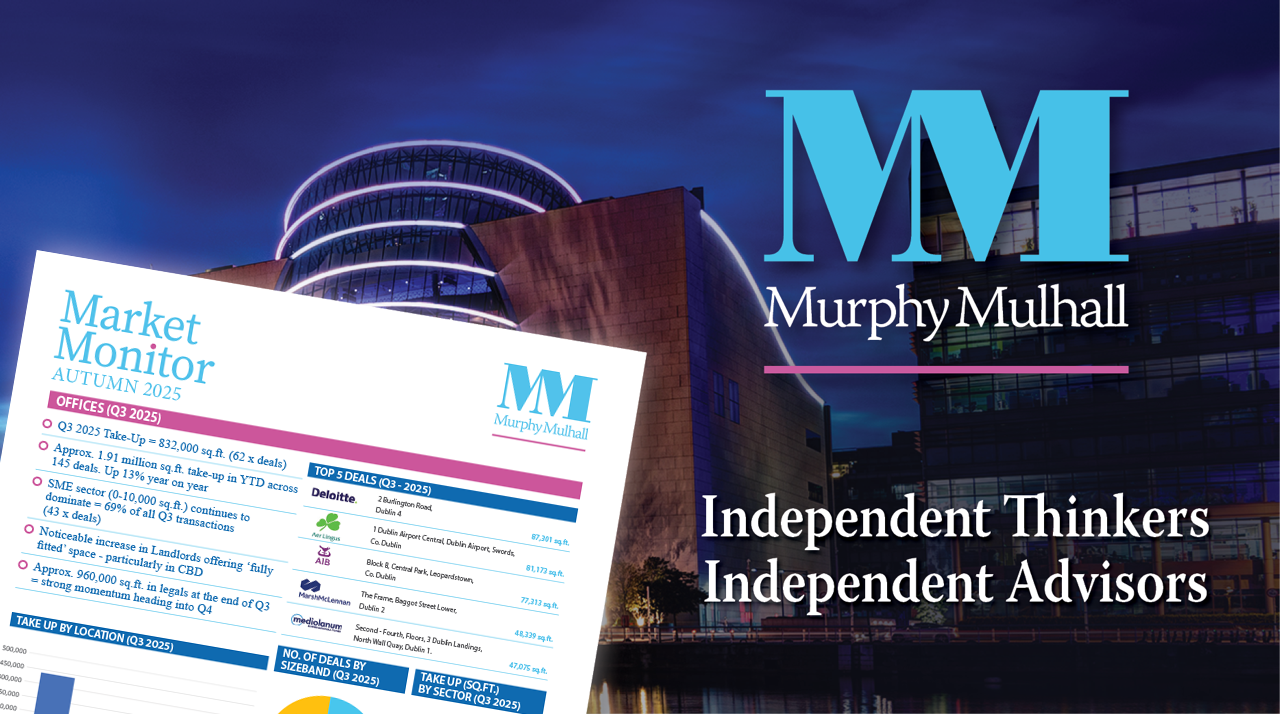Moving Office? It’s not just about the Rent!
Moving office is a major decision—it goes beyond square footage and headline rents. In today’s business environment, moving office is about aligning your workspace with your company’s values, culture, and long-term goals, especially around talent attraction and retention. Here’s my guide to the key steps you should consider.
1. Understand Why You’re Moving
Before diving into locations or fit-outs, clarify the core reasons for your move. Are you expanding? Downsizing? Looking for a space that reflects your brand better? Increasingly, businesses are also moving to support recruitment and retention strategies. As one occupier recently said to me, paying a premium rent for top-tier office space wasn’t a real estate decision—it was a recruitment one. A well-located, high-quality office can help attract and retain top talent, and that benefit can outweigh marginal savings in rent.
2. Engage a Tenant Rep Broker Early
A trusted Tenant Rep Broker (TRB), such as Murphy Mulhall, can guide you through the process from start to finish, ensuring your business objectives are met. They act exclusively on your behalf, leveraging deep market knowledge, access to off-market opportunities, and expert negotiation skills. I operate daily in this space and with international connections, we bring insight into how occupiers in other markets are approaching their space strategy.
3. Think People, Not Just Property
Rent is just one line item in a broader cost-benefit equation. Office space can be a key tool in employee satisfaction. Is the location convenient? Is the building Best-in-Class (BIC)? Does it support hybrid work, collaboration, and wellbeing? Consider what your team wants in a workplace and how the space can support productivity and culture over a 3–5-year horizon.
4. Assess the Office Buildings individually
Prime office rents—especially in Central Business Districts (CBDs)—have remained resilient in markets like Dublin, London, and other European capitals. However, increased incentives and more flexibility in older or secondary buildings can create value opportunities. A skilled TRB can help weigh up the trade-offs between rent, location, and building quality.
5. Plan Your Timeline & Budget
A successful move takes time—often 9–12 months from planning to occupancy. Factor in time for identifying space, legal negotiations, design, and fit-out. Your budget should include not just rent but service charges, fit-out costs, IT infrastructure, and potential incentives from landlords.
6. Future-Proof Your Space
The way we work is evolving. Look for flexible layouts, strong ESG credentials, and buildings that can adapt as your business grows or shifts. The right space can be a springboard for innovation, culture, and growth.
In Summary
An office move is a chance to re-set, re-brand, and re-energise your business. Yes, rent matters—but the bigger picture includes your people, your brand, and your future. When done right, it’s not just a real estate move—it’s a strategic business decision.
Managing Director





